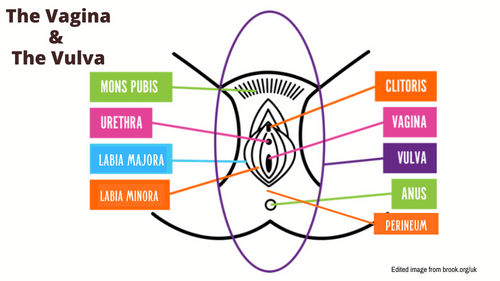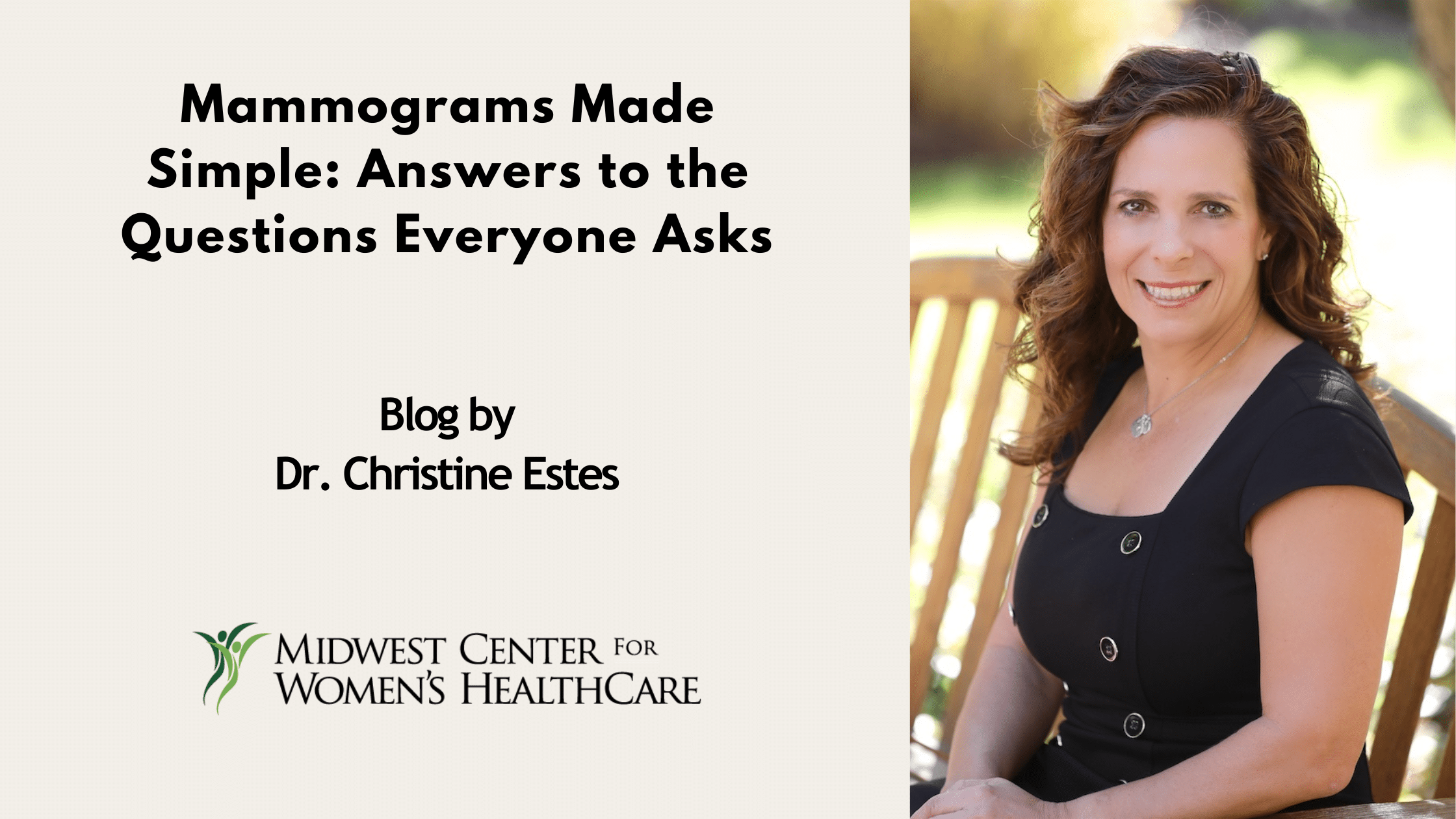So many “V” words. This article provides a brief explanation of external genital anatomy. In my many years as a gynecologist, I’ve heard an amazing array of words to describe anatomy. But, the most common word is always vagina. Even when patients don’t actually mean the anatomic vagina, this is the word they often use to describe anything in their genital region. Many articles written about the topic are part of the problem. Diagrams of genital anatomy are often labeled incorrectly. It’s no wonder that there’s confusion over the correct terminology. As an obstetrician-gynecologist, I am thrilled by the growing cultural acceptance of the word vagina and my patients’ comfort with using it. But I would like to introduce another “V” word, vulva, and explain the difference between the vagina and the vulva.

The Vagina
Let’s start with the word that everyone is already familiar with. Vagina. The vagina is the internal muscular tube that leads from the external genitalia to the cervix and uterus. It is an internal structure. The vagina is the place where a tampon or a menstrual cup sits during the period. It is the canal that a penis is inserted into during penetrative penile intercourse (sometimes called “traditional” sex, quotes used because there are so many ways to have sex and there is no such thing as traditional sex!). You can only see the entrance to the vagina from the outside.

The Vulva
So, what is the vulva? The vulva is everything that you can see on the outside. It is made up of the labia majora, the labia minora, the clitoris, the opening to the urethra, the vaginal opening, the perineum, and the mons pubis.
- Labia Majora: These are the outer skin folds or lips. During puberty, hair starts to grow on the labia majora.
- Labia Minora: These are the inner skin folds or lips. Sometimes they appear tucked inside the labia majora, sometimes they extend farther beyond the borders of the labia majora. Frequently they are different sizes on each side (asymmetry).
- Clitoris: A very sensitive tissue bundle at the joining point of the two labia minora. It has a hood of skin that covers it. Only a portion of the clitoris is visible. The majority of the structure is internal. The clitoris can enlarge during sexual arousal. Clitoral stimulation is frequently the source of pleasurable sensation and orgasm.
- Urethral Opening: Tucked between the two labia minora and positioned between the clitoris and the vaginal opening. The urethra is the tube that drains the bladder. This is the opening where urine/pee comes out.
- Vaginal Opening: Sometimes also called the vestibule. The entrance to the vagina can be ringed by a ruffle of thin tissue called the hymen. The hymen is tremendously varied, sometimes barely there and other times prominent or differently shaped.
- Mons Pubis (translated pubic mound): The uppermost portion of the vulva. It is a slightly rounded fat pad that lays over the pubic symphysis or joining point of the pubic bones. Sometimes this is also called the mound of Venus (another “V” word!) and is named after the Roman goddess of love, sex and fertility.
- Perineum: The bridge of skin, muscle and connective tissue between the vulva and the anus.
One of the most important things to say about the vulva is that it comes in all shapes and sizes. Everyone’s vulva looks slightly different. It is very common for the two sides to be slightly asymmetrical or for the labia minora to extend beyond the labia majora. If you have ever seen online photos of the vulva, illustrations, erotic images, or pornography, etc., it is important to understand that the majority of these vulvas represent only a very narrow range of what a vulva can look like. Many of the images may have also been digitally modified or the vulva portrayed may have been surgically modified to fit the perceived notions of what a vulva is “supposed” to look like. This is not reality! Real vulvas change over the course of your life, in response to hormones, pregnancy, childbirth, menopause, weight loss and weight gain. This is all normal.
Words are powerful. Knowing your own anatomy and the words for it allows you to communicate any health concerns or questions to your healthcare provider more clearly. My hope is that knowing your own anatomy empowers you, both from a gynecologic health standpoint and in all areas of your life.
Additional Resources
- The Vagina Bible: The Vulva and the Vagina: Separating the Myth from the Medicine written by Dr. Jen Gunter. 2019.
- The Labia Library (http://www.labialibrary.org.au/)
An Australian website with information about vulvar anatomy, answers to frequently asked questions, and photos of actual vulvas. - The Vulva Gallery on Instagram (https://www.instagram.com/the.vulva.gallery)
An illustrated collection of an incredible variety of vulvas. - 100 Vaginas. Documentary directed by Jenny Ash. 2019. Follows British artist Laura Dodsworth as she photographs the vulvas of 100 different people of all ages, body types, gender identities and cultural backgrounds and interviews them about their personal experiences with their vulvas and vaginas. Please note that this documentary is very explicit contains multiple images of unclothed people as well as references to sex, masturbation, and sexual violence.
About The Author
MIRIAH PLAWER, M.D., F.A.C.O.G.
Miriah Plawer, M.D., F.A.C.O.G. is a Board Certified OB-GYN since 2008 and a Fellow of the American College of Obstetricians and Gynecologists. She is affiliated with hospitals of the NorthShore University Health System (primarily Evanston Hospital). Dr. Plawer graduated from the University of Illinois College of Medicine with honors and completed her OB-GYN residency program at Northwestern University.
Dr. Plawer is certified in the insertion and removal of LARCs (Long Acting Reversible Contraception). She is also fluent in medical Spanish.
In her spare time, Dr. Plawer enjoys spending time with her family, cooking, reading, traveling, and watching little league baseball.
Dr. Plawer has offices in Evanston and Glenview and she is currently accepting new patients by calling 847-869-3300. Learn more about Dr. Plawer at www.mcwhc.com.





